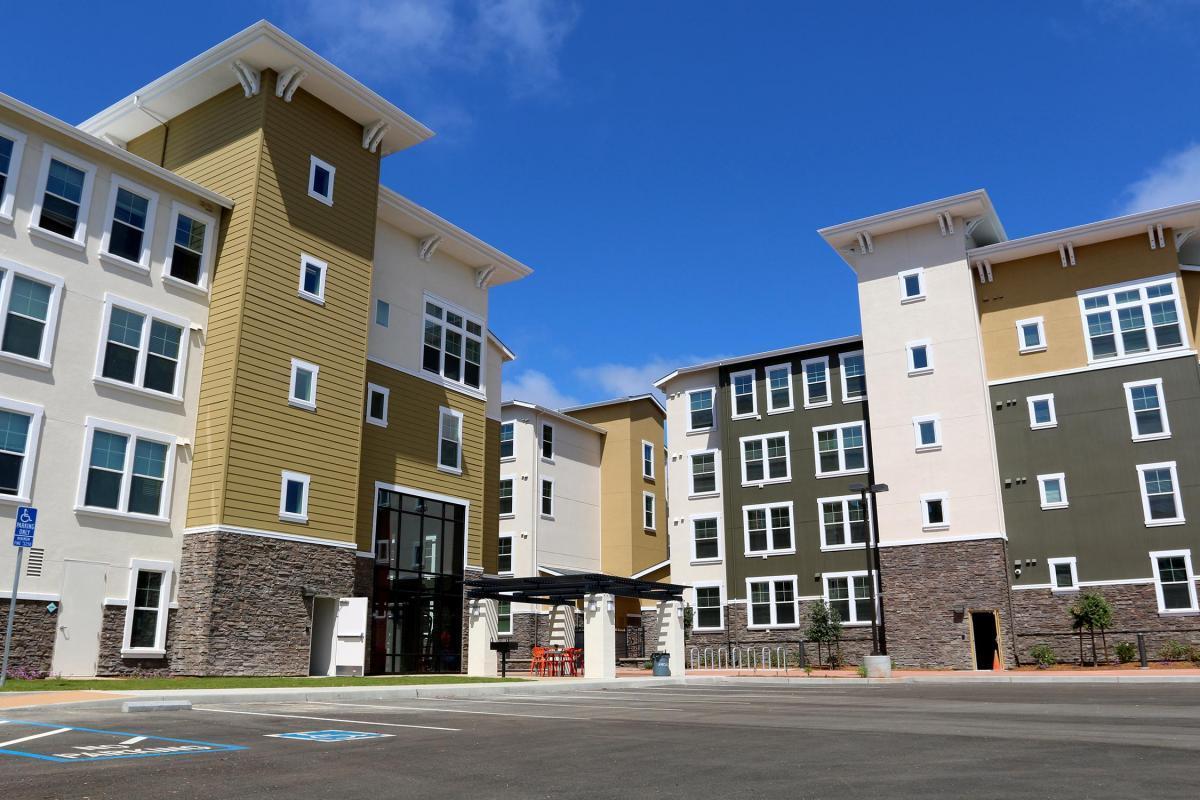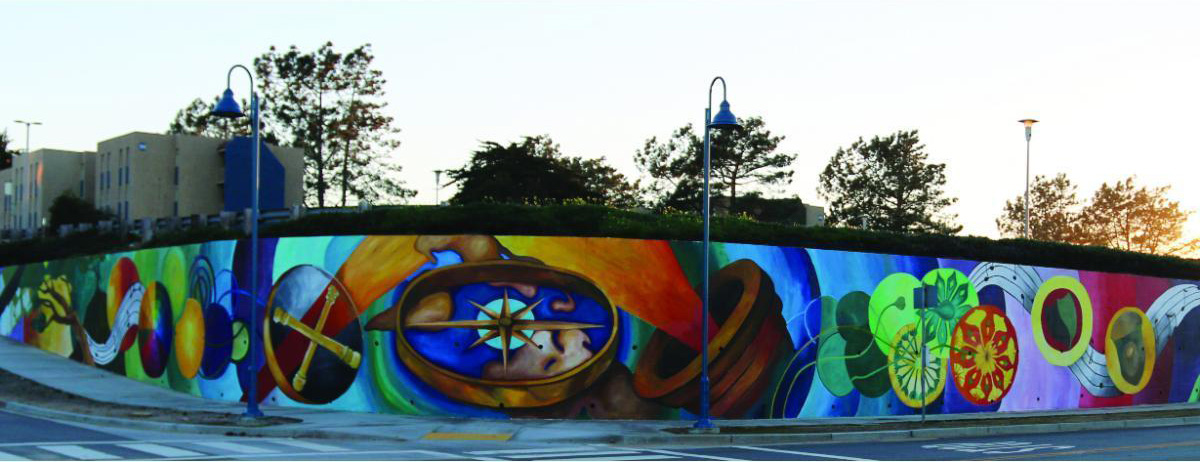The year in review
Cal State Monterey Bay experienced a year of transformative change and growth.
Cal State Monterey Bay experienced a year of transformative change and growth.
From a $10 million gift – the largest in school history – to new buildings and acknowledgement of innovative programs, 2015 was a banner year for the university.
Students' educational experiences spanned the classroom, the lab, the Internet and the globe, from a freshman seminar on youth and protest in the arts to fieldwork on tropical biodiversity in Costa Rica.
The community gathered to discuss important issues, to hear noted speakers such as poet laureate Juan Felipe Herrera and professor and civil rights activist Cornel West, and to celebrate annual traditions such as alumni weekend, commencement and the Have a Heart for Students scholarship fundraiser.

Business and Information Technology Building

Promontory
Here are some of the highlights:
- A $10 million gift will create endowed professorships in business entrepreneurship and nursing, will fund student scholarships and will create a fund to help students research, build and launch products from concept to market. In recognition of the gift, the newest academic building was named the Business and Information Technology Building. The 58,000-square-foot building contains eight classrooms, 12 labs, offices and student study areas.
- The Promontory, a student housing complex just north of campus in Marina, opened in August. It’s the first new housing to come online since 2004. The project consists of three 150,000-square-foot, four-story buildings, with a total of 174 units and 579 beds.
- CSUMB and the National Steinbeck Center completed a deal that brought the university to the city of Salinas. Under terms of the deal, negotiated among the university, the Steinbeck Center and the city of Salinas, CSUMB’s corporation purchased the building for $3 million.
- Enrollment hit an all-time high with 7,102 students taking classes in the fall semester.
- A new work to replace the original Signs and Symbols mural that graced the wall along Inter-Garrison Road across from the Visual and Public Art complex was dedicated in the spring. The updated mural reflects the vision of the university and draws upon the old design.

The Vision Mural along Inter-Garrison Road
- The innovative work being done by CSUMB was recognized by the state through its Awards for Innovation in Higher Education. The university was awarded $5 million for the CS-in-3 program, which allows students to earn a computer science degree in three years. A collaboration between Hartnell College and the university, the program was ranked among the top five applications. MATH at CSUMB, a developmental course, was awarded $3 million. The awards recognized schools for devising innovative, creative and cost-effective ways to get more students to earn degrees in less time.
I think we can legitimately claim to be the most innovative university in California.— President Eduardo Ochoa
- At the 19th annual commencement, 1,450 graduates heard from keynote speaker Hugo Morales, who built a community radio station for California farmworkers into a national Latino public media network. Included among the graduates was the first group to earn nursing degrees from CSUMB.
- The President’s speaker series continued in the fall semester with a discussion of affordable housing in the region and a look at a successful Internet startup. Last spring, immigration issues took center stage.
- Millions of dollars in grants were secured by faculty and staff members. Among them:
– $1,100,000 three-year grant from the National Science Foundation to fund ICE – the Polar Interdisciplinary Coordinated Education program.
– $1 million five-year grant from the National Institutes of Health to train a diverse workforce in biomedical data science as part of its Big Data to Knowledge (BD2K) initiative.
– $1.2 million five-year grant from the U.S. Department of Education to develop a program to train school psychologists.
– $1.09 million five-year grant from the U.S. Department of Education under the TRIO Student Support Services (SSS) Program to assist 120 students annually in their pursuit of undergraduate degrees in the science, technology, engineering and mathematics (STEM) fields.
– $1.2 million five-year grant renewal from the U.S. Department of Education for the existing Student Support Services program that serves 160 students.
News Information
- Published
- January 1, 2016
- Department/College
- University News
